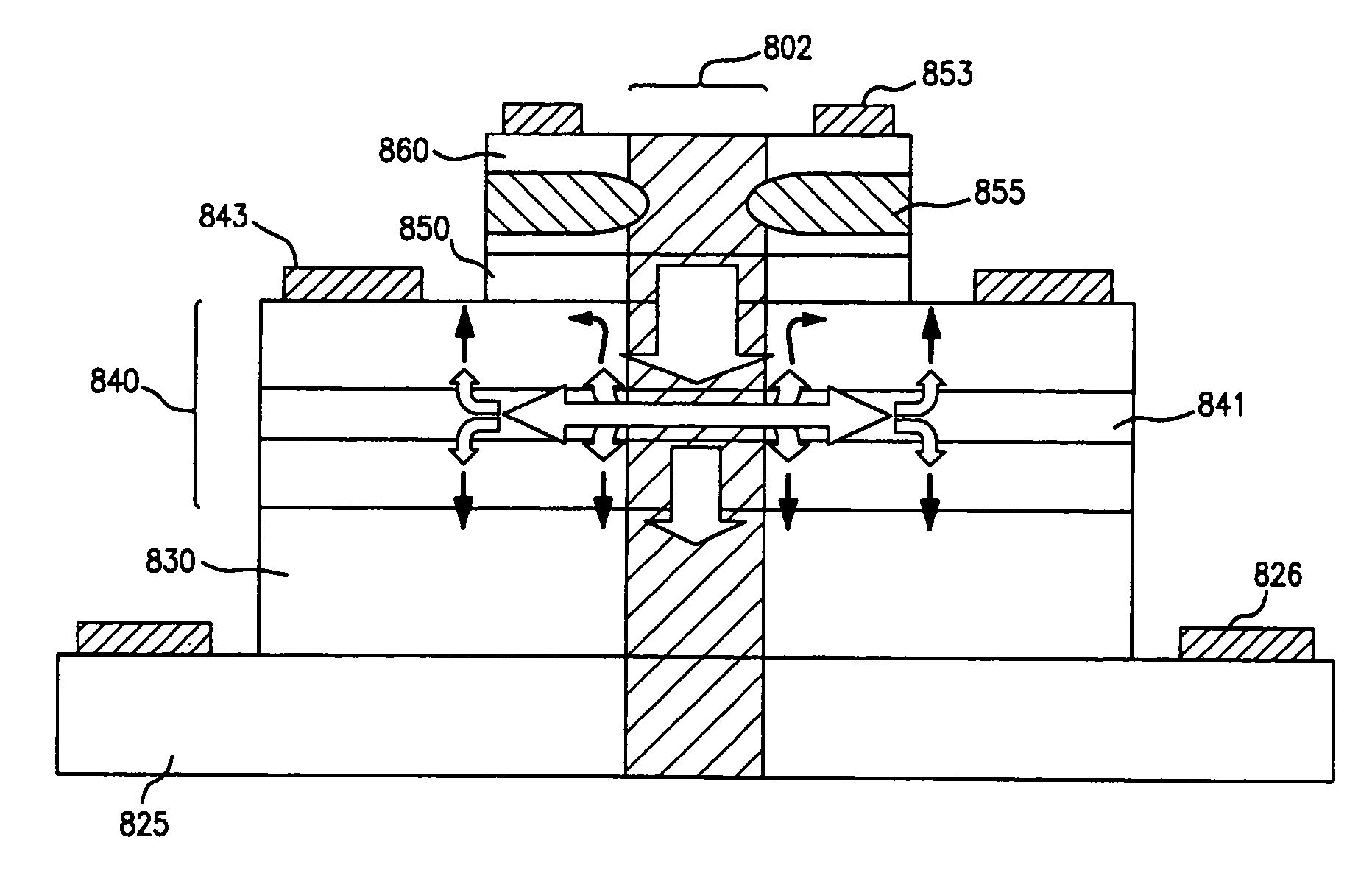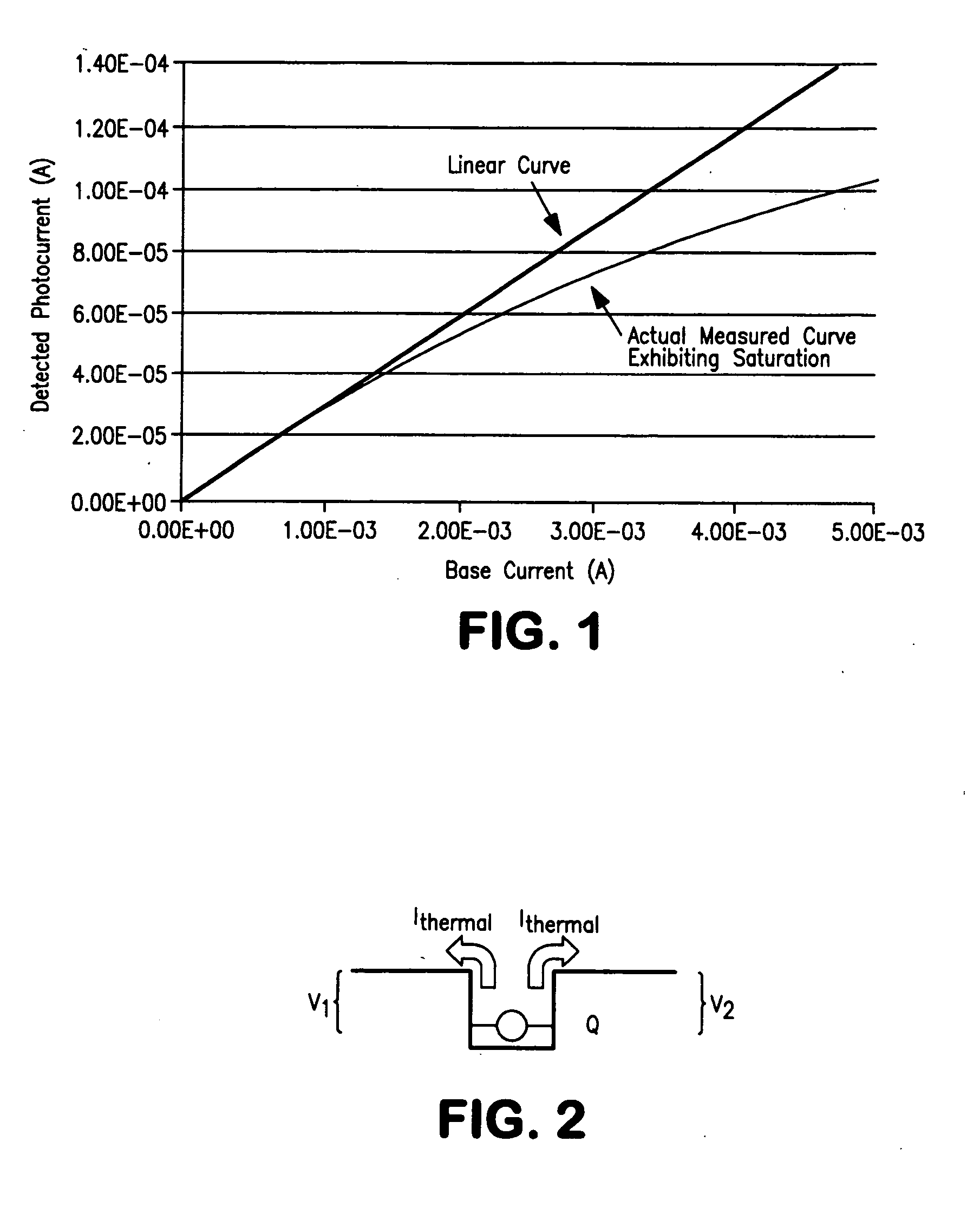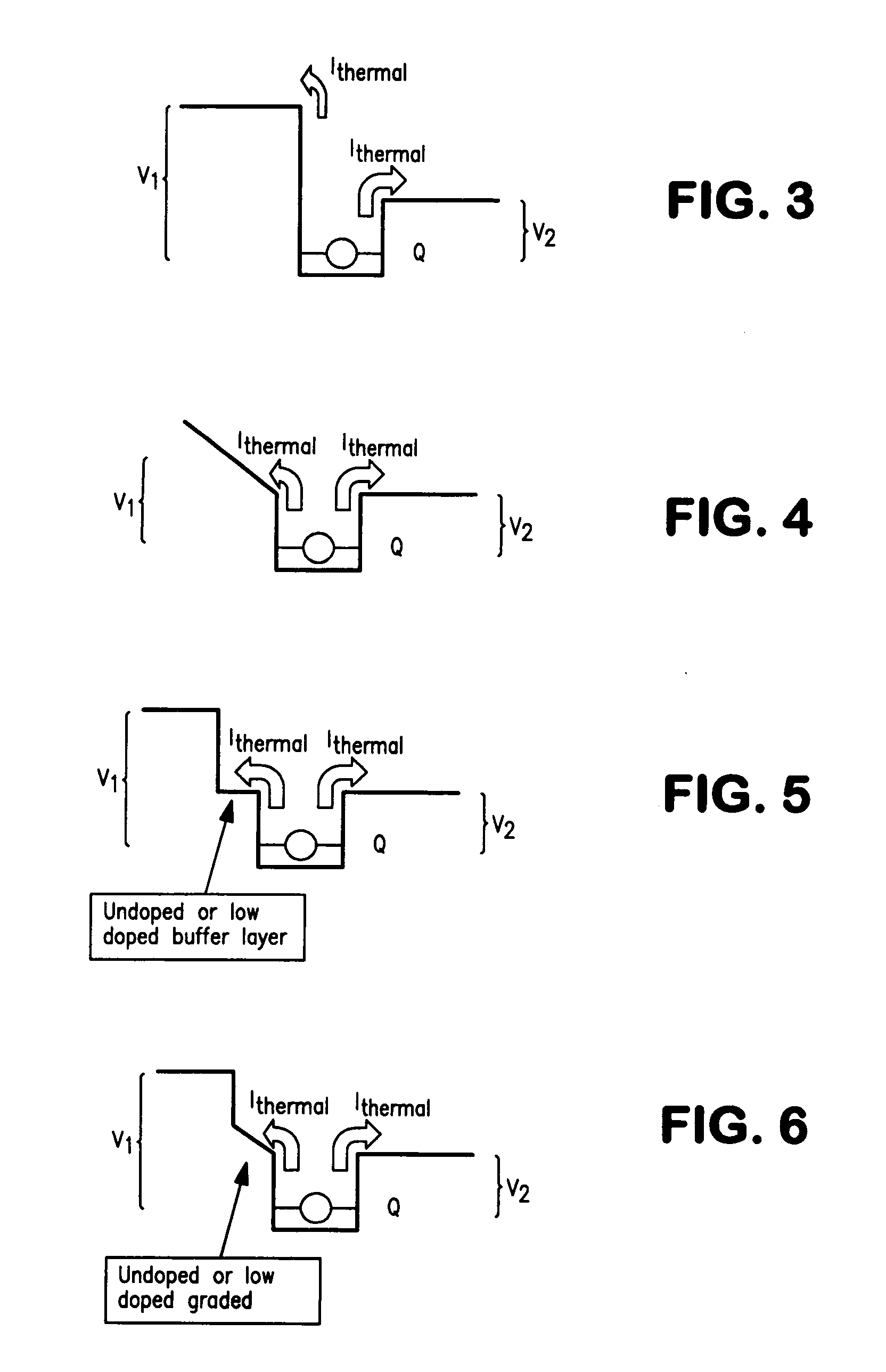Light emitting and lasing semiconductor devices and methods
a technology of semiconductor devices and semiconductor components, applied in semiconductor devices, semiconductor lasers, lasers, etc., can solve the problems of reducing the quantum efficiency of the described devices and saturating behavior, and achieve the effect of reducing quantum efficiency and minimizing the non-radiative recombination componen
- Summary
- Abstract
- Description
- Claims
- Application Information
AI Technical Summary
Benefits of technology
Problems solved by technology
Method used
Image
Examples
Embodiment Construction
[0031]Applicant has observed that the radiative recombination component does not increase linearly with base current. FIG. 1 shows measured photon output from a QW-HBLET exhibiting saturation behavior (departure from linear curve) at higher base current indicating an increase in non-radiative recombination component. In addition, Applicant has also observed that the radiative recombination component is also a strong function of temperature. These observations further suggest that non-radiative recombination activity, and therefore bulk base recombination, also increases as a function of both current density and temperature.
[0032]Referring to FIG. 2, which shows an energy band diagram for a typical quantum well in a base region, the thermalization current (Ithermal) depends mainly on two variables, phonon energy (proportionate to temperature, T) and the barrier height (V) in which the carriers are confined, as seen from the following relationships:
Ithermal1∝-qV1kTIthermal2∝-qV2kTIthe...
PUM
 Login to View More
Login to View More Abstract
Description
Claims
Application Information
 Login to View More
Login to View More - R&D
- Intellectual Property
- Life Sciences
- Materials
- Tech Scout
- Unparalleled Data Quality
- Higher Quality Content
- 60% Fewer Hallucinations
Browse by: Latest US Patents, China's latest patents, Technical Efficacy Thesaurus, Application Domain, Technology Topic, Popular Technical Reports.
© 2025 PatSnap. All rights reserved.Legal|Privacy policy|Modern Slavery Act Transparency Statement|Sitemap|About US| Contact US: help@patsnap.com



